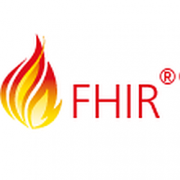Workshop „Catching FHIR“
Datum/Zeit: 20.03.2014 10:00 - 14:00
Veranstaltungsort: FH Technikum Wien
iCal-Kalenderimport
Catching FHIR: HL7 FHIR Hands-on Training Course
About the Trainer:
Drs. Ewout Kramer is a member of the FHIR Core team and Health architect at Furore.
Ewout Kramer has studied Informatics at the Vrije Universiteit in Amsterdam. For more than a decade he has been assisting software developers build HL7 version 3 connectivity into their systems. He is a member of the HL7 RIMBAA group, specializing in HL7 RIM-based integration architecture and system design.
Ewout has been involved in the HL7 FHIR specification since its inception and has the responsibility for the .NET reference implementation thereof. He has also created public FHIR test servers and FHIR Connectathon certification tests.
Combining his experience as software developer, architect and speaker, Ewout makes sure his training courses are fun, up-to-date and practical.
Ewout is the R&D Coordinator of Furore and can be contacted via e.kramer@furore.com.
Summary of course content:
This training course offers a hands-on overview of the content of the HL7 FHIR standard. It also offers guidance on how to design, develop and test software that uses the HL7 FHIR interoperability standard, all the way from the wire-format up to validation and storage. The development process of new HL7 FHIR resources will not be touched upon.
Who Should Attend: This training course is aimed at those involved with the design, development, implementation, deployment and support of systems that use (or will use) the HL7 FHIR standard.
Goals of the training course: Upon completion of this training course, attendees will be able to:
- Explain the key pinciples underlying FHIR.
- Explain the relationship between FHIR and other HL7 standards.
- Describe the characteristics and contents of the core FHIR information models.
- Help their organization to determine if, when, where and how they might implement FHIR
- Understand how FHIR aligns with REST, object-oriented and other common software-engineering principles.
- Compare strategies for using relational or document-oriented storage, validation and use of Xml and Json.
- Getting hands-on experience with the software implementation of FHIR and with the available reference implementations.
Prerequisites: The attendees are assumed to be familiar with:
- XML, Json and web-infrastructure protocols,
- Although not a requirement, knowledge of HL7 version 2 and/or HL7 version 3 will be helpful in understanding the material,
- Knowledge of .NET or Java platform is helpful, because some of the exercises will be done in either C# or Java. Should you not have knowledge of either platform, then you will be asked to partner with another attendee.
- General principles of data modeling,
- General software development principles like object orientation, databases, layered software design.
Agenda:
- Introduction
- Overview of FHIR
- Resources, extensions and the 80/20 rule
- Resources and RESTful design philosophy
- Using REST to exchange resources in XML and Json.
- Exercise: Requesting a patient Resource
- Deconstructing FHIR data
- Resources
- Datatypes and primitives
- Exercise: Person demographics, with extensions
- Contents of the FHIR distribution
- More on REST
- Atom: adding identity, metadata and versioning
- How FHIR uses verbs
- Conformance profile
- Exercise: Requesting a patient resource using C#/Java support libraries
- Implementation aspects
- How to handle multiple wire formats
- Searching
- Tour of Xml, Json and persistence alternatives
- Implementation Examples
- Summary and recommendations
- V2 messages, v3 CDA, IHE XDS and FHIR
- Migration
Course Materials: Each participant will be provided with handouts containing all materials covered in the training as well as other support materials. The participants will also receive a copy of the latest version of the FHIR specification.
Kategorien



